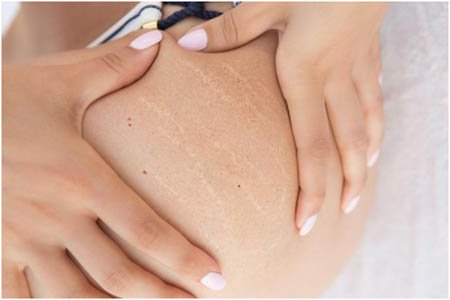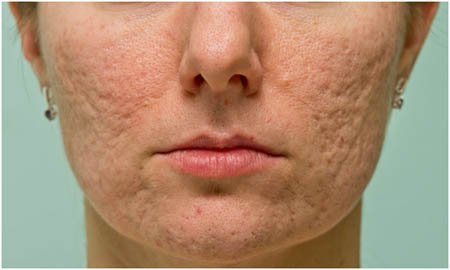
Scars: How many types are there How I can try?
Although in some cultures scars are considered art show or experience, in our country it is often desirable not to have them visible. We show you a quick guide to understanding why they form and how we should treat them to minimize them.
How a scar formed?
Broadly speaking, a scar is a mark or trace of a wound. The tissue forming part of it consists of the same collagen tissue which has replaced, but this varies slightly in composition, making act and behave differently than the surrounding skin. Over the years, many of us we accumulate cicactrices. And although we do not like, it is always better to have a scar that an open or unhealed wound, as this may lead to a more serious infection or disease.
Five types of scars are known:
Hypertrophic Scar
It is characterized by bulging. Hypertrophic scars are usually thick, with a pink / red color and can cause itching or pain.
They usually appear after 4 to 8 weeks after infection or wound closure.
Keloid Scar
It is also a lumpy scar. It differs primarily because hypertrophic scar keloid grows above the wound area. Keloid scars can occur in anyone, but are more common in people with the most pigmented skin.
Atrophic Scars
It is deep scars, forming holes in the skin. An example is acne scars.

Stretch Marks
Stretch marks are also classified as a type of scar. They are caused by rapid stretching of the skin, such as during pregnancy or rapid weight gain.
Umbilicus
It is the only scar that everyone has, and is known as navel. Yes, it really is a scar!
How to identify the scars?
The first step to finding a treatment for your scars is to identify the type of scar you want to treat. The most easily identifiable are stretch marks, which can be found in many parts of the body almost solely by differing skin color. If these grooves are depressed they are treated as atrophic scars. If you are bulging will be more difficult to identify whether they are keloids or hypertrophic, so we see a dermatologist to help us determine the type. (For now we leave aside the umbilicus because we expect everyone to know what he looks like the navel and we do not want to remove it, right?).
Create new scars to cover old
Yes, you read right. This is mostly true as to eliminate old scars in many treatments we create new ‘wounds’ for the body to detect them and act on them. The trick is to do it in a controlled manner so that the new scar tissue to form in a manner not different from the tissue surrounding the wound. Further:
To remove raised scars, such as those caused by pimples, cuts, piercings or burns, we must undo the accumulation of collagen that form this scar and replacing it with new scar tissue to grow up.
To remove depressed scars, as caused by acne, chicken pox or surgery, must break the collagen skin pulling down and refilled with new collagen.
Depending on the source and intensity of the scar, there are several methods of achieving this goal.
Combination of treatments in clinic and at home
Treatments performed in clinics can be invasive and costly, but provide instant results or magnificent in no time. The tratamientso you can administrarte or realizarte yourself are usually long-term, as effective as clinical, but require patience and including them in the daily routine dedication. Therefore, experts advise a combination of professional treatment and home thus providing the best long-term results. Below is a list of the most popular treatments (or not so popular, but very effective) you can consider with your dermatologist.
Surgery: In this technique the doctor cut and remove the scar. Then it will close the incision with one or more points, depending on the extent of it. This procedure may leave a scar, but it will be flat and smaller than the original. It is used to remove small, deep and narrow atrophic scars, and some hypertrophic scars.
Subcision: This is a technique in which the doctor, after applying anesthesia, use one or several needles bevelled to break the collagen fibers pulling the skin towards the inside, thus eliminating stress and, therefore depression in skin. It is mostly used in cases of atrophic scars.
Dermabrasion or microdermabrasion: Dermabrasion must be performed by a doctor and involves a controlled much deeper skin level (in the middle layer of the skin) by using a powerful grinding device such as a wire brush, a wheel action diamond, sterilized paper sandpaper or other mechanical methods. Microdermabrasion is a softer cosmetic procedure in which generally an exfoliating material such as glass or diamond scales and suction through suction gently lifts the skin during exfoliation used. With these methods most types of scars are treated.
Micropúas therapy: This treatment can be performed in a clinic or at home, depending on the length of the micropúas used. This treatment is conducted at two levels: Producing collagen breakdown which pulls the skin down (atrophic scars) or lifting the skin (hypertrophic scars). Also induces natural collagen formation. It is a treatment used to remove atrophic and hypertrophic scars.
Filling: It is a treatment that produces immediate results: cosmetic fillers are injected into the scar, thus smoothing the skin superfie. At the same time, if the filling substance is inducing collagen will help stimulate natural collagen reneracion in the area. It is used to treat long, deep and atrophic scars.
Chemical peeling: chemicals that destroy the superficial layers of the skin in a controlled manner in the affected (and adjacent) zone, producing a rapid stage exfoliation are used. It is used to treat pores brands, but beware if your skin is pigmented or have a tendency to produce keloid scars.
Laser treatment: There are a variety of laser therapies that would give us to write a complete whole article on this technique, but simplifying we can say that all laser therapies act “destroying” the skin to a certain depth. In this way the skin begins triggers natural healing, regenerating unmarked. It is appropriate therapy for most scars, different types of lasers being used for each scar.
Topical treatments: We can find creams, serums and other topical treatments work level in different ways, depending on the ingredients, but all will help eliminate the appearance of scars. Combined therapy with micropúas can definitive results for the reduction and / or elimination of all types of scars.
Final note
As with any treatment aimed at a change in appearance or body image is a word CAUTION to keep in mind. It is important to consult with experts any treatment that we do. always ask side effects. Remember that you can also check testimonials from previous users. As a tip, always starts with the lowest intensities or wavelengths barb and gradually increases the intensity and / or frequency. It is always better to go slowly to repent of adverse effects!
